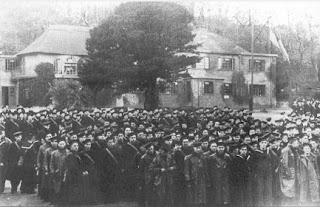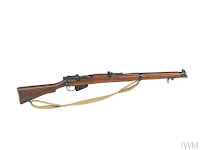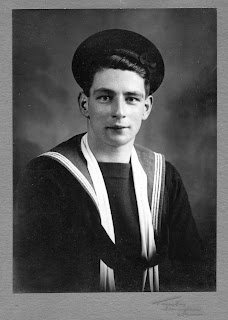By July 1942 it was time to join the Royal Navy as I had passed fit by Dr. Lawson. My call-up papers told me to report to the “Sparrows Nest”, Lowestoft, to join the shore establishment, HMS ‘Europa’, of the Royal Naval Patrol Service (RNPS) on the 1st of August.
 |
| RNPS Badge |
During my convalescence from appendicitis, Sid Emery had finished his training and was aboard ship in the Portsmouth area in the Royal Navy proper.
I went to Lowestoft for six weeks training and was billeted out in a private house with four others. We got kitted out as ordinary seamen and reported each day for training: seamanship, learning the compass, basic navigation, knots and splices. There were lectures on mine sweeping.
 |
| RNPS, HMS Europa, Lowestoft, 1942; © Lowestoft War Memorial Museum |
I returned to Lowestoft for further training: gunnery and depth charge courses. We had to keep watches and duty of colour guard, a little morse, also semaphore, making up the six week’s training. We then awaited our first ship.
It was not long before my name came up on the public address and notice board. I was drafted to North Shields, Tyne and Wear, to join HMS “June Rose” as a relief seaman.
 |
| North Shields was a Base for Royal Navy Minesweepers |
Medway Queen, a Dunkirk veteran had left North Shields for refit before Henry arrived in 1942. She is now preserved in Gillingham, Kent.
On my first leave from North Shields, mother and father arranged for Mr. Tansley to take my photograph. It was Boxing Day 1942.
 |
| F.V. "June Rose" by Rob Andrew |
The “June Rose” (Pennant Number FY.752) had been a peace-time drifter built at Aberdeen in 1918.
 |
| FV "June Rose" ex "Icicle" |
"June Rose” had a mixed crew of 15 and, as good luck would have it, she was commanded by a fellow Norfolkman, a Great Yarmouth skipper, now made a lieutenant in the Royal Naval Reserves (RNR).
 |
| Navy List Aug 1943, © National Library of Scotland |
“June Rose” was fitted out for the magnetic mines as the enemy would drop these by parachute in the convoy channel. While on patrol we towed a raft behind us with coils of copper wire on it, the drifter had a big engine and generator aft that sent out an electric pulse to blow up the mine if it passed over.
The drifter or minesweeper was relatively safe as it was “de-gaussed” with huge wires fixed to the hull of the ship. We also had our armourments:
 |
| Six Lee-Enfield Rifles © IWM (FIR 7404) |
 |
| Oerlikon Gun © IWM (A 7500) |
 |
| Bren Gun © IWM (FIR 8005) |
Although I had done a gunnery course at Lowestoft, the skipper said “Westy you will have to do two days on the gunnery course at South Shields, as the chap you replaced was a PSSG” (Patrol Service Seaman Gunner).
After that course, I became in charge of the guns and ammunition.


